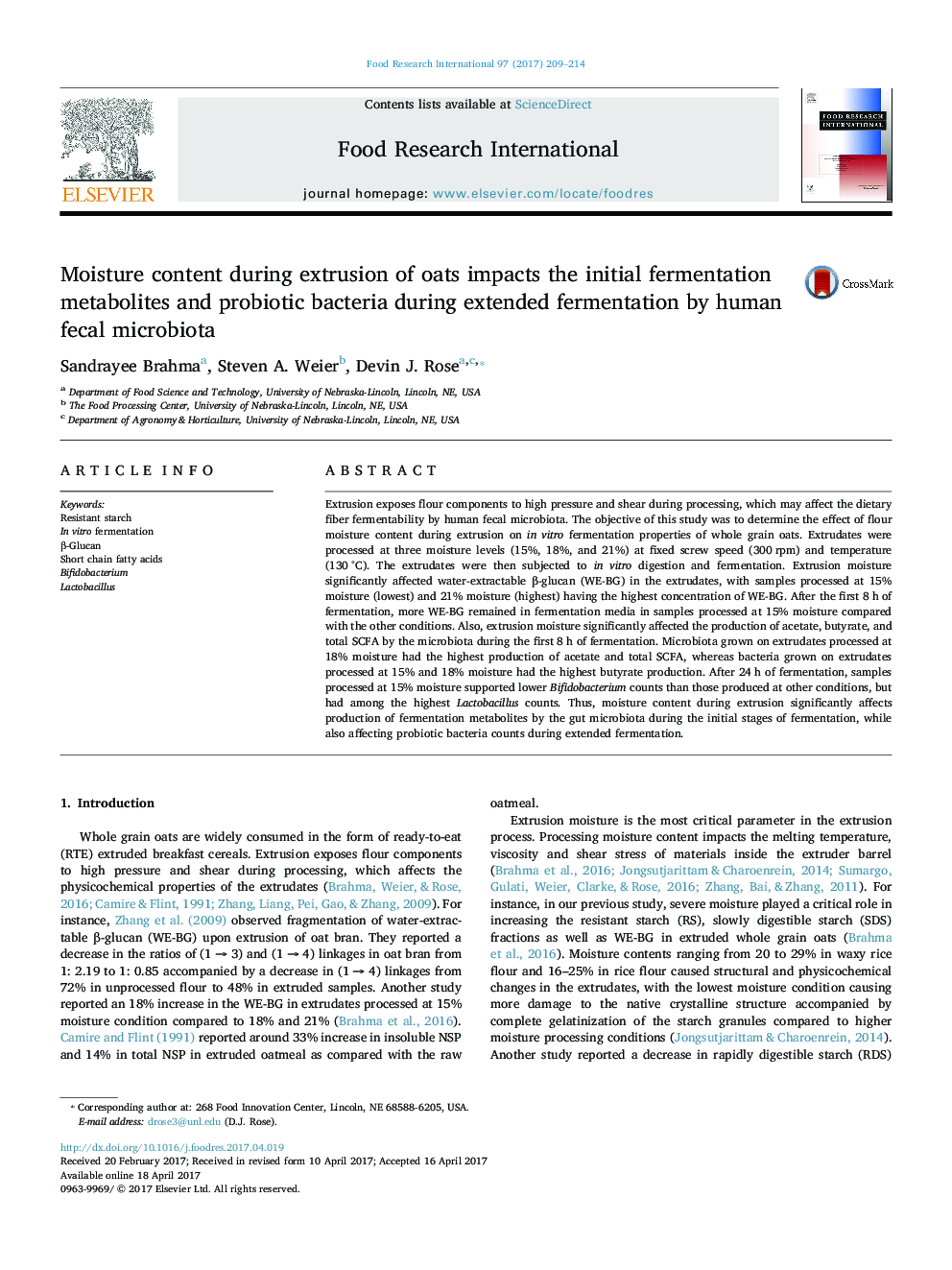| Article ID | Journal | Published Year | Pages | File Type |
|---|---|---|---|---|
| 5768225 | Food Research International | 2017 | 6 Pages |
â¢Whole grain oats were extruded at 3 moisture contentsâ¢Lower moisture led to more water-extractable beta-glucanâ¢Lower moisture resulted in more butyrate during initial stage of fecal fermentationâ¢Lower moisture supported lower Bifidobacterium after 24 h of fermentationâ¢Higher moisture supported lower Lactobacillus after 24 h of fermentation
Extrusion exposes flour components to high pressure and shear during processing, which may affect the dietary fiber fermentability by human fecal microbiota. The objective of this study was to determine the effect of flour moisture content during extrusion on in vitro fermentation properties of whole grain oats. Extrudates were processed at three moisture levels (15%, 18%, and 21%) at fixed screw speed (300 rpm) and temperature (130 °C). The extrudates were then subjected to in vitro digestion and fermentation. Extrusion moisture significantly affected water-extractable β-glucan (WE-BG) in the extrudates, with samples processed at 15% moisture (lowest) and 21% moisture (highest) having the highest concentration of WE-BG. After the first 8 h of fermentation, more WE-BG remained in fermentation media in samples processed at 15% moisture compared with the other conditions. Also, extrusion moisture significantly affected the production of acetate, butyrate, and total SCFA by the microbiota during the first 8 h of fermentation. Microbiota grown on extrudates processed at 18% moisture had the highest production of acetate and total SCFA, whereas bacteria grown on extrudates processed at 15% and 18% moisture had the highest butyrate production. After 24 h of fermentation, samples processed at 15% moisture supported lower Bifidobacterium counts than those produced at other conditions, but had among the highest Lactobacillus counts. Thus, moisture content during extrusion significantly affects production of fermentation metabolites by the gut microbiota during the initial stages of fermentation, while also affecting probiotic bacteria counts during extended fermentation.
Graphical abstractDownload high-res image (205KB)Download full-size image
